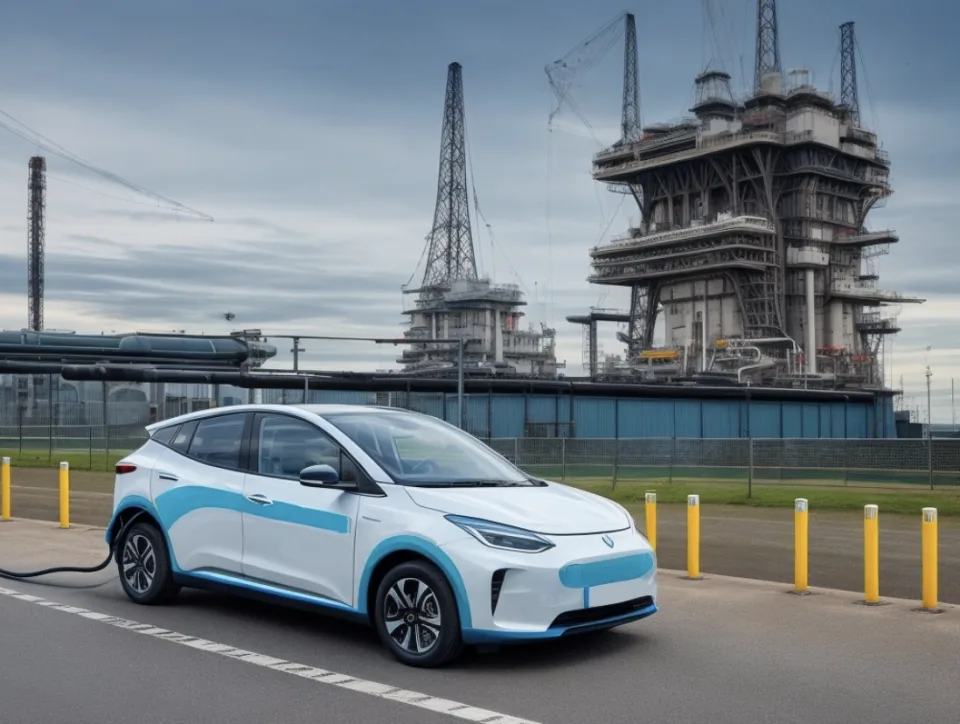
Oil titan ExxonMobil is making a major play for the lithium market, announcing plans to become a leading producer of lithium for electric vehicles (EVs).1
Earlier this year, Exxon acquired 120,000 acres of the Smackover Formation in southern Arkansas, a geological site abundant in lithium resources.
The company plans to start battery-grade lithium production by 2027, aiming to produce enough lithium for one million EVs annually by 2030. Ongoing discussions with potential EV and battery manufacturing partners are underway.
This move towards lithium production aligns with the growing emphasis on climate change by major oil companies. While competitors like Shell and BP focus on renewable energy sources such as wind and solar, Exxon is investing $17 billion through 2027 to reduce emissions, emphasizing carbon capture, hydrogen, and biofuels.
Emphasizing domestic lithium production, Dan Ammann, president of Exxon’s low carbon solutions business, sees lithium as a long-term investment for the growing electric vehicle market, emphasizing an environmentally friendly approach.
Despite abundant domestic lithium deposits, the US heavily depends on imports from Argentina and Chile. Li-Bridge forecasts a sixfold surge in US lithium battery demand by 2030, coinciding with increased EV adoption. According to a Cox Automotive report in October, EV sales increased by 50% in the third quarter of 2023 compared to the same period last year, although electric vehicles currently constitute only 1% of the U.S. vehicle fleet.2
Exxon plans to reach the lithium by drilling 10,000 feet below the surface using oil and gas equipment. The company plans to utilize direct lithium extraction (DLE) to separate the lithium from the mixed saltwater, a process that produces fewer carbon emissions than hard rock mining and requires significantly less land.
This isn’t ExxonMobil’s only tie to the lithium space. The company’s majority owned subsidiary Imperial Oil invested in E3 Lithium Ltd. (TSXV:ETL) (FSE:OW3) (OTCQX:EEMMF) in 2022, Alberta’s foremost lithium developer and innovator in extraction technology. The strategic collaboration will advance a lithium-extraction pilot in Alberta, exploring the redevelopment of an historic oil field into a potential new leading source of lithium for Canada’s growing critical minerals industry.
E3 Lithium just reached a major inflection point, successfully producing battery-quality lithium hydroxide monohydrate (LHM) with a stunning purity level of 99.78%.
Unlocking a New Source of Canadian Lithium
On November 7, E3 Lithium outlined the results from the field testing of its proprietary DLE technology at the pilot plant and the performance far exceeded expectations.
Results include a lithium recovery rate of over 90%, well above the target of 80%, and a high-purity lithium concentration of 722 mg/L against the anticipated 600 mg/L. The system also achieved an impressive flow rate ratio of 15.6, five times above its Key Performance Indicator (KPI) metric.
“The field pilot plant has operated exactly as intended since its commissioning in August,” said E3 Lithium’s President and CEO Chris Doornbos. “Total testing has consumed more than 500 m3 of brine produced from the well at the pilot location, providing us with the data needed for the commercial design and a deep understanding of the performance of various DLE technologies on our brine resource.”
E3 Lithium (TSXV:ETL) (FSE:OW3) (OTCQX:EEMMF) continues to progress its Pre-Feasibility Study (PFS), which will take DLE results and other factors into account for the production of final battery-quality lithium hydroxide.
That isn’t the only significant milestone E3 Lithium has achieved in 2023. Earlier this year, the company upgraded its mineral resource at its lithium property in Alberta to 16.0 million tonnes of lithium carbonate equivalent (LCE) in Measured and Indicated categories, making it the largest M&I lithium resource in all of Canada.3
